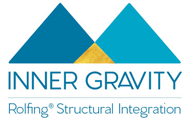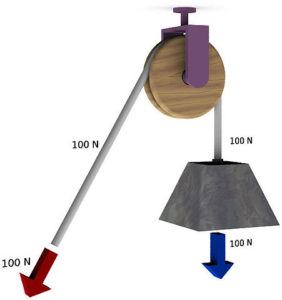So most people know that tendinitis is an inflammation of the tendon.Good.
But how did that tendon get inflamed?
Often there’s a clear event, an accident, a stretch. You know you pushed it too far on that bike ride, on that hike or during that yoga class.
But just as often there is no clear “event” or explanation.
So you’re told it’s overuse.
But unless you’re an extreme athlete, really using your body a lot more than average, it’s hard to believe that such a complex machine would be injured that easily just by using it! No usually if a tendinitis develops somewhere, it’s because your body is out of alignment.
And because it’s out of alignment the tendons, which are supposed to glide in their grooves or in their beds, get pulled to one side or another and end up rubbing or grinding on a structure that they were not supposed to be in contact with in the first place. Thus creating inflammation.
Imagine a pulley
Where the red arrow is, is your shoulder, the pulley is your elbow and the weight is whatever you have in your hand.
When the rope is aligned and taut everything is fine (as long as the weight is not too heavy of course).
Now imagine that we insert some little pebble or nail between the pulley (elbow) and the shoulder (red arrow), pushing the rope slightly out of alignment.
2 things can happen.
If the pebble is big enough the tendon (rope) will start hurting where the pebble is because of friction. But most of the time it’s not big enough.
What it does though is pull or push the rope slightly out of alignment with the pulley. Then the stress of the misalignment will be at the level of the pulley and the constant rubbing of the tendon in the elbow at an inappropriate angle will make it hurt.
But you can work on the elbow all you want, it’s not going to go away! Because it’s not there.
“Where you think it is, it ain’t”- Ida Rolf
You need to work at the shoulder level or wherever the pebble is.
I had a client who was a rock climber and very crafty. He loved to use his hands for all kinds of activities, woodworking, guitar, fly making… He had been struggling with tendinitis in both elbows for several years. When it flared up he’d just stopped climbing for a while and it would go away, until he started climbing again.
He signed up for the 10 series but
after just a couple of Rolfing sessions his pain was gone.
And I barely touched his elbows. What I did though was open up his shoulders and relax his neck. The tension he was carrying in his shoulders, upper rib cage and neck was enough to pull the tendons out of alignment and he was feeling it in his elbows.
My rotator cuff injury started as a tendinitis in the shoulder, and I know now that had I corrected my posture at that point it would never have gotten worse.
That was before I discovered Rolfing, before I realized I had poor posture.
…
You know what? I shouldn’t say I had poor posture, because I really didn’t. I was carrying my stress in my shoulder girdle and everything was really tight in there. Nothing could really move the way it was supposed to.
You see, I am also guilty of it obviously, but for most people it’s not an issue of Poor Posture, these words are a horrible way to describe it. (What is it with human beings that we like to beat ourselves up?)
There is an optimal posture for every body,
where your body can function appropriately and not get injured.
That’s what I want to find for my clients.
Where is that point of balance in your shoulders? Where do they need to rest on top of your rib cage to be most efficient? Where and how does your spine need to connect with your pelvis so that they can work independently but together?
If you want to know what your optimal alignment is and maybe get rid of some tendinitis or nagging pain, I think you should try Rolfing!
Give me a call.







